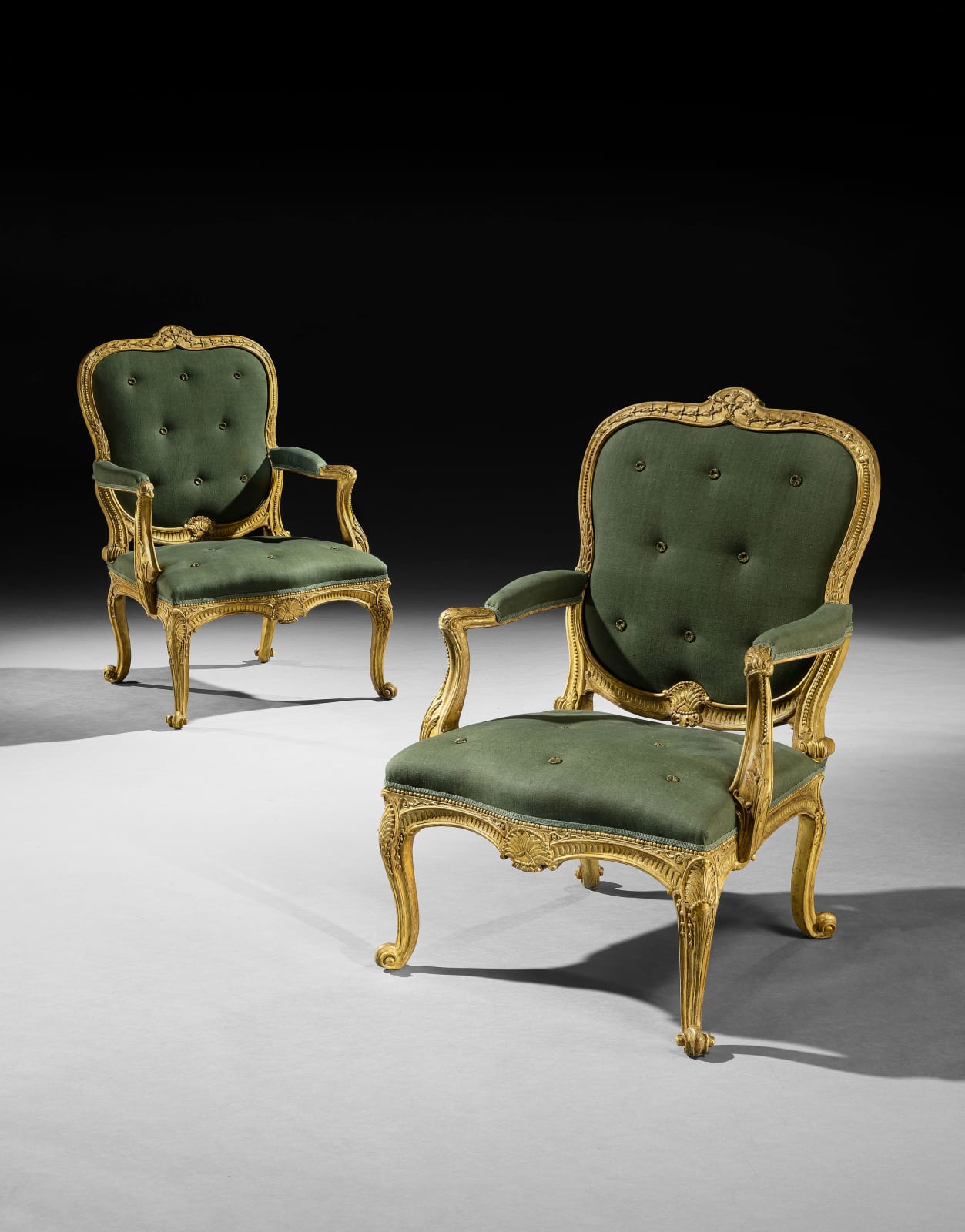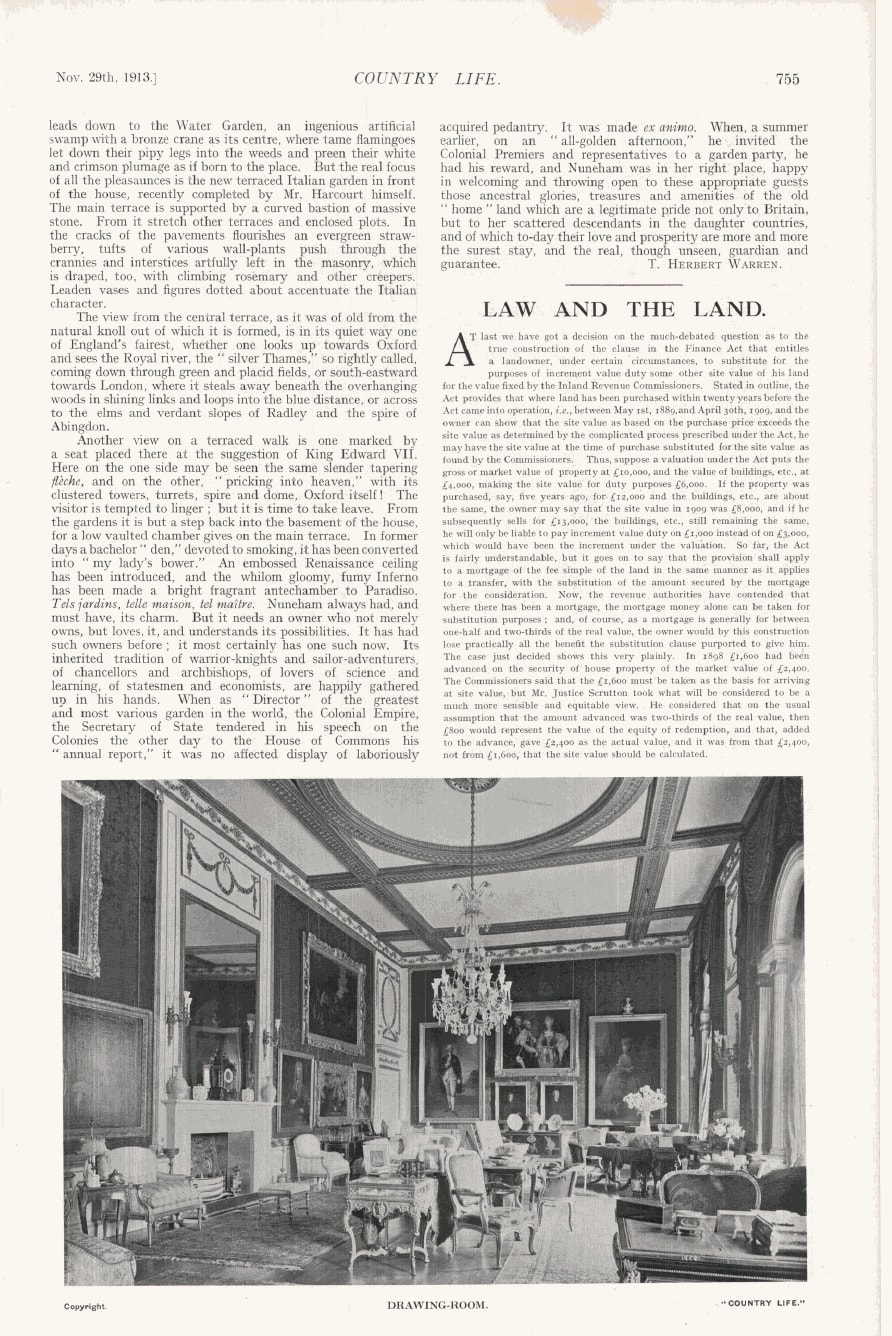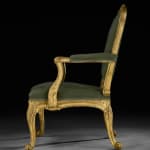Seating
THE NUNEHAM PARK CHAIRS, DESIGNED BY JAMES 'ATHENIAN' STUART AND ATTRIBUTED TO JOHN GORDON
W: 27.75" / 70.5cm
D: 28.25" / 71.5cm
Further images
Provenance
Supplied by James Stuart to Simon Harcourt, 1st Earl Harcourt (1714-77) for Nuneham Park, Oxfordshire, England
By descent, Harcourt family at Nuneham to William Edward Harcourt, 2nd Viscount Harcourt (1908-1979), by whom sold, E. J. Brooks & Son, 1-2 December 1948
Acquired by Edwin H. Herzog, New York and Charleston, South Carolina, USA for his private collection and donated in 1981
Charleston Museum, South Carolina, USA
Literature
A. Coleridge, ‘Chippendale, The Director and some Cabinet-makers at Blair,’ Connoisseur, Dec. 1960, pp. 252-6
P. Thornton and J. Hardy, ‘The Spencer Furniture at Althorp - II’, Apollo (June 1968), pp. 440-451 (p. 448)
G. Worsley, ‘Nuneham Park Revisited – I & II’, Country Life (3 & 10 January 1985), pp. 16-19; pp. 64-67
Weber Soros, S. (ed.), James ‘Athenian’ Stuart: The Rediscovery of Antiquity (New Haven and London, 2006)
COMPARE
Pair from the suite sold Sotheby’s, New York, 24 April 2010, lot 97, USD $241,000
Pair from Spencer House, sold Christie’s, London, 8th July 2010, GBP £802,850
Publications
T. Herbert Warren, ‘Nuneham Courtenay, Oxfordshire’, Country Life (29th November 1913), pp. 746–55 (p. 755) See images
Frank Davis, ‘Glorious Vane’, Country Life (13 January 1983), p. 62, fig. 2
Pelham Galleries, The Grosvenor House Art and Antiques Fair, Cat. (1996), p. 108
The Nuneham Park Armchairs: An Early Expression of English Neoclassicism
Design and Stylistic Context
This pair of giltwood armchairs were designed by James “Athenian” Stuart and are attributed to the workshop of John Gordon. They are exceptional expressions of early English neoclassicism that predate the important suites of transitional seat furniture supplied by Thomas Chippendale and Robert Adam for Sir Lawrence Dundas. The 1760 was a moment when British taste was shifting decisively away from the Rococo towards the harmony of the classical world, which was partly inspired by archaeological discoveries at Herculaneum and Pompeii and by the studies of ancient Greek and Roman architecture.
James Stuart, having returned from his pioneering survey of Greek antiquities and the publication of The Antiquities of Athens (1762), was one of the chief exponents of this new aesthetic. His designs emphasised balance, symmetry, and an authentic vocabulary of classical ornament, that included laurel leaves, husk garlands, and palmettes. In his interiors, furniture was conceived as an integral component of the architectural scheme, harmonising with doorcases, plasterwork, and chimneypieces in a unified classical idiom.
John Gordon
Few documents survive relating to Gordon’s commissions, though his association with Stuart places him at the forefront the new movement. His role was less that of an entrepreneurial businessman like Chippendale and more that of a skilled workshop master executing designs for a visionary architect. The rarity of firmly attributed works has enhanced the importance of surviving examples.
Stuart’s Architectural Role at Nuneham Park
Stuart’s first work at Nuneham involved modifying Stiff Leadbetter’s original plans. In December 1756, Simon Harcourt wrote to his friend Thomas Worsley that he had “boldly adventured” to follow Stuart’s drawing of the screen marking Hadrian’s Aqueduct for his new villa’s four Venetian windows. Only months after Stuart’s return from Greece, Lady Harcourt wrote to her son Lord Nuneham of “a sight of some drawings of Mr Stewart’s of the remains of Grecian Antiquities.” Nuneham thus became the first house in England to quote directly from ancient Greece, with Stuart replacing the Roman Ionic capitals of the original design with the Greek Ionic order from the temple on the Ilissus — the first examples of the Greek Ionic order in Britain.
The Harcourt Family and Royal Connections
Simon Harcourt, 1st Earl of Harcourt, was a politician, soldier, and diplomat, created Earl in 1749 for his services during the Jacobite Rebellion. A close friend of George III and Queen Charlotte, he maintained strong royal ties established by his grandfather, the 1st Viscount Harcourt, Lord High Chancellor under Queen Anne. In 1751 Harcourt became governor to the Prince of Wales and later special ambassador to negotiate George III’s marriage to Princess Charlotte, personally escorting her from Germany to England.
The Harcourts’ connections ensured Nuneham Park was a favoured royal retreat. George III described it as “the most enjoyable place I know” during a visit in 1786, and Queen Victoria and Prince Albert stayed there in 1841, admiring its pleasure grounds overlooking the Thames and Oxford.
Later Cultural Associations
In the 1860s, Lewis Carroll visited Nuneham with Alice Liddell and her family, drawing inspiration for Alice’s Adventures in Wonderland and Through the Looking Glass. The estate also inspired Goldsmith’s The Deserted Village. Built in the 1750s, Nuneham was a landmark in the revival of the villa form in Britain, later attracting contributions from Henry Holland and Capability Brown.







